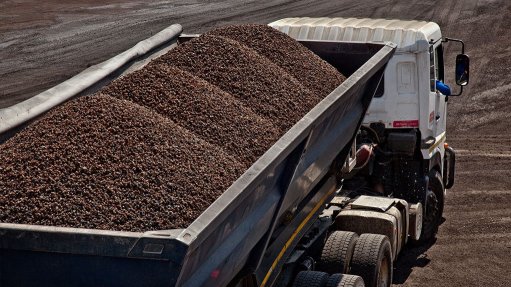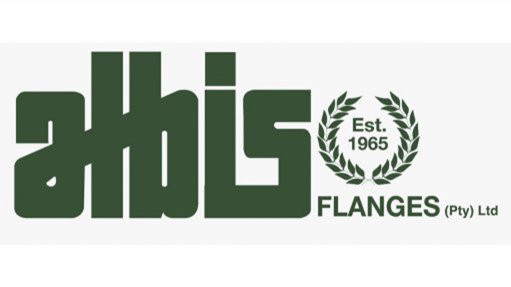Electricity price hikes and their impact on mining
The recent rise in electricity prices is eating away at everybody’s pockets. While energy-intensive users are the largest consumers of electricity, in terms of total share, they receive prices at wholesale rates rather than retail prices. What ordinary citizens would pay for electricity supplied by a municipality would be much higher. But how do we understand the economic dynamics of business profitability and sustainability in the face of higher energy costs.
You cannot make the assumption that, if electricity prices go up, the competitiveness of the mining sector will be affected. There may be a relation or there may not – the story is a little more complicated.
Electricity costs should always be judged relative to the movement of other costs and overall revenue streams to ensure a more informed understanding of their impacts.
We have to look at different trend patterns of electricity costs relative to other cost variables and how they stack up in relation to total mine output and the value of this output. For example, it is possible that, if electricity costs go up, energy use becomes more efficient and the total output for a unit of electricity consumed in terms of kilowatt hours per ton of mined output will determine the extent to which an operation is cost resistant or, in other words, has made operational changes that are better able to absorb the higher electricity costs.
For example, before an electricity cost increase, a mine, in a hypothetical case, uses x amount of electricity to produce a y amount of output. When electricity prices go up, initially, we should expect the relation to be x + 2 in the price of electricity and the same level of output y (assuming y is constant), with the value of the output being lower as a result of the higher electricity costs.
However, mines can be expected to become more responsive and dynamic in their operations. They may actually reduce consumption by x – 2 or stay at x, and may even improve performance by y + 2 or stay at y in terms of output. So, electricity costs remain within the ballpark range of total operating costs (as a percentage of total costs) either because of efficiency or greater output.
What this illustrates is that, while electricity prices may go up, there may well be cost reductions or productivity improvements through the introduction of improved management approaches.
Higher electricity costs are more than likely to elicit a dynamic rather than static relation to upward cost pressures than would be made evident to us as the natural inclination of a firm or firms is to pursue strategies that would try to adapt to the changing costs of energy. In other words, we should expect increased prices to, in theory, lower electricity consumption intensity for either the same output or more. Put differently, for less electricity (x), you get the same level of output (y) or more.
Larger firms are expected to be more adaptive than smaller ones. Different mines have different cost curves, depending on the depth of the mine, shaft sizes, the age of the mine and richness of the orebody.
Electricity cost impacts are also determined by the price of the commodity. The higher the average price of a commodity with a stable cost scenario, the better the profitability of the mine.
What we should not lose sight of is that an electricity price squeeze is more than likely to improve mine performance than not and the ‘absorptivity’ of electricity costs is entirely related to an improvement in output and the market value of this output or commodity. It is fair to say that the co-movement of electricity prices with other costs and the value of the output (where it increases or decreases in price) will determine whether higher electricity costs are detrimental or not.
Cheap elec- tricity prices tend to make companies wasteful and complacent. Higher prices may well make them less complacent, efficient and competitive. So, sometimes a rise in electricity prices that reflects its true opportunity cost value can be a good thing. However, higher prices can also be too much of a shock to the system and create difficulties for a firm or firms to adapt to the changing cost structure because the pace of tariff hikes is too fast.
Going forward, we need to get a better sense of what mining costs look like for their different variable costs, what the trends are and what the relationship between electricity costs and mining costs is. It may be the case that even where electricity costs go up, the mine’s operating costs remain stable and within their inflation range or target so that the overall profitability of the business remains the same. It also depends on the stage at which the mine is. Older and deeper mines will have higher cost structures and the costs will be even higher if the concentration of the mineral is at a lower percentage than the historical trend when the mine was first opened.
This means there is less and less of the mineral as the mine becomes older. It is expected that a newer mine would have the richest pickings, the best orebodies and lower operating costs, and its energy intensity would not be so great. Energy intensity will also depend on the type of mines we are talking about – opencast or underground mining.
Opencast mining is less energy intense and tends to be more mechanised. The more effort there is to get to the mineral and extract it, the more energy is used. Each geological site or mine has different profiles for the level of effort required, or the higher the quality of the orebodies, the richer the pickings and so the more profitable the mine is.
Article Enquiry
Email Article
Save Article
Feedback
To advertise email advertising@creamermedia.co.za or click here
Comments
Announcements
What's On
Subscribe to improve your user experience...
Option 1 (equivalent of R125 a month):
Receive a weekly copy of Creamer Media's Engineering News & Mining Weekly magazine
(print copy for those in South Africa and e-magazine for those outside of South Africa)
Receive daily email newsletters
Access to full search results
Access archive of magazine back copies
Access to Projects in Progress
Access to ONE Research Report of your choice in PDF format
Option 2 (equivalent of R375 a month):
All benefits from Option 1
PLUS
Access to Creamer Media's Research Channel Africa for ALL Research Reports, in PDF format, on various industrial and mining sectors
including Electricity; Water; Energy Transition; Hydrogen; Roads, Rail and Ports; Coal; Gold; Platinum; Battery Metals; etc.
Already a subscriber?
Forgotten your password?
Receive weekly copy of Creamer Media's Engineering News & Mining Weekly magazine (print copy for those in South Africa and e-magazine for those outside of South Africa)
➕
Recieve daily email newsletters
➕
Access to full search results
➕
Access archive of magazine back copies
➕
Access to Projects in Progress
➕
Access to ONE Research Report of your choice in PDF format
RESEARCH CHANNEL AFRICA
R4500 (equivalent of R375 a month)
SUBSCRIBEAll benefits from Option 1
➕
Access to Creamer Media's Research Channel Africa for ALL Research Reports on various industrial and mining sectors, in PDF format, including on:
Electricity
➕
Water
➕
Energy Transition
➕
Hydrogen
➕
Roads, Rail and Ports
➕
Coal
➕
Gold
➕
Platinum
➕
Battery Metals
➕
etc.
Receive all benefits from Option 1 or Option 2 delivered to numerous people at your company
➕
Multiple User names and Passwords for simultaneous log-ins
➕
Intranet integration access to all in your organisation


















